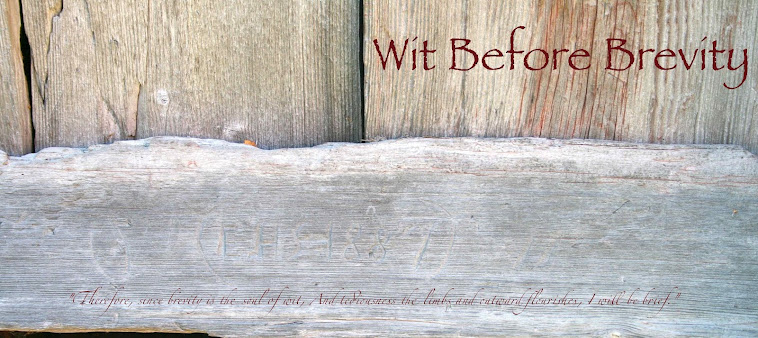My words fly up, my thoughts remain below: Words without thoughts never to heaven go.
Hamlet, Act III, scene iii, lines 100-103
Hamlet, Act III, scene iii, lines 100-103
(Quick little note: posts and musings about Anne Lamott's Bird by Bird will start later in the week.)
I have a little issue with all of this online posting that we do. It’s fun – to see our own creations online, to see what others think about them, to see what others have created and then to have the chance to respond to them. But, here’s the deal. I also see people who are great scrappers, in my humble opinion, post about how nervous they are to journal because they’re afraid that it will sound silly, childish, whatever.
Let’s unpack this for a minute. Who are we afraid of sounding “silly” to? The kids whose pages we’re creating? These, after all, are the creatures whose butts and noses we’ve wiped, and who aren’t at all afraid (if they’re like mine) of mooning their parents with the living room shades wide open. The sister who at the age of 80 picks up your scrapbook because she desperately misses you?
I think we’re afraid of sounding silly or goofy or childish to the wrong audience. And so I want to talk about audience a bit.
If you’re reading this, chances are you’re a scrapper who spends a bit of time online. (Or a lot of time online. But I’m not pointing any fingers here.) You probably post your layouts, cards, and/or altered items on any of the hundreds of online galleries that are out there, you may have your own blog, you might be on a design team or be interested in being on one, and you might even be interested in publishing your work.
So, who is your audience?
In most of the publications about journaling that come close to talking about “audience” as a writerly term, we always assume that our “audience” has something to do with heritage… that we’re creating what we create for our kids, for our family, for us to look back on or be remembered through… Simple enough. My simple answer to the question, “Who do you scrap for?” would be, just as simply, “My kids.”
But I don’t think it’s that simple. If I’m creating a layout for an online forum’s challenge, it has to be in my head as I’m working on it, even if I’m thinking at the same time that it’s going into my son’s “Age 9” scrapbook. If I’m scrapping that way, my audience is NOT just my son. It’s everyone that I can imagine reading the journaling, from the owner of the site, to the DT, to regular members, to the many surfers and lurkers who browse through galleries where we’re not members.
Now, I’m not saying that’s bad. But I do want to point out the disparity in who we SAY we’re scrapping for, and who we’re really scrapping for.
No matter what kind of product that a writer produces, whether it’s a cookbook, a short story, a play,… one of the first questions that that writer tackles is, “Who is your intended audience?”
Note that word there. Intended. Who do you want to read your work? Who are you pointing it toward? Who do you imagine sitting at the other end of the creative process, reading what you’ve produced?
I think that as scrappers who have an online audience, we have to do some hard thinking about this audience question. Be honest. Are we really journaling for ourselves, our kids, or whomever we imagine reading this creation fifty years from now? Or, when we say that we’re nervous about journaling, afraid of sounding silly or stupid, are we really saying that we’re writing more for our peers online than for those who are going to care about what’s there on the page fifty years from now?
Exeunt, pursued by bear.

